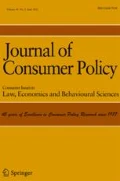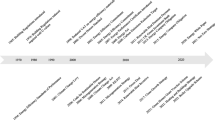Abstract
This paper examines a successful residential peak electricity demand reduction project which employed a multi-disciplinary approach. The purpose of this study was to examine the critical success factors necessary for reducing peak demand and total energy consumption in a small Australian island community. This case study research is based on qualitative data obtained from semi-structured, in-depth interviews with residents from 22 households. It is proposed that the results of the examined project are transferable to other communities if the utility is able to develop the necessary trust, access, influence, and partnership with residential consumers required to create the environment for electricity demand reduction success. Findings from this research highlight the potential approach for future policymaking aimed at reducing peak electricity demand and total energy consumption in multiple communities, thus helping achieve government low carbon targets while reducing infrastructure spending.


Similar content being viewed by others
References
Abrahamse, W., & Steg, L. (2009). How do socio-demographic and psychological factors relate to households’ direct and indirect energy use and savings? Journal of Economic Psychology, 30(5), 711–720.
Abrahamse, W., Steg, L., Vlek, C., & Rothengatter, T. (2005). A review of intervention studies aimed at household energy conservation. Journal of Environmental Psychology, 25(3), 273–291.
Apajalahti, E.-L., Lovio, R., & Heiskanen, E. (2015). From demand side management (DSM) to energy efficiency services: a Finnish case study. Energy Policy, 81, 76–85.
Aronson, J. (1994). A pragmatic view of thematic analysis. The Qualitative Report, 2(1), 1–3.
Baker, T. L. (1994). Doing social research. New York: McGraw-Hill.
Bandura, A. (1977). Social learning theory. Englewood Cliffs: Prentice-Hall.
Bartusch, C., Wallin, F., Odlare, M., Vassileva, I., & Wester, L. (2011). Introducing a demand-based electricity distribution tariff in the residential sector: demand response and customer perception. Energy Policy, 39(9), 5008–5025.
Bergami, M., & Bagozzi, R. P. (2000). Self-categorization, affective commitment and group self-esteem as distinct aspects of social identity in the organization. The British journal of social psychology / the British Psychological Society, 39 Pt, 4(4), 555–577.
Biggart, N. W., & Lutzenhiser, L. (2007). Economic sociology and the social problem of energy inefficiency. American Behavioral Scientist, 50(8), 1070–1087.
Bonnemaizon, A., & Batat, W. (2011). How competent are consumers? The case of the energy sector in France: how competent are consumers? International Journal of Consumer Studies, 35(3), 348–358.
Bord, R. J., Fisher, A., & Robert, E. (1998). Public perceptions of global warming: United States and international perspectives. Climate Research, 11(1), 75–84.
Burchell, K., Rettie, R., & Roberts, T. C. (2014). Community, the very idea!: perspectives of participants in a demand-side community energy project. People, Place & Policy Online, 8(3), 168–179.
Burchell, K., Rettie, R., & Roberts, T. C. (2016). Householder engagement with energy consumption feedback: the role of community action and communications. Energy Policy, 88, 178–186.
Burnard, P., Gill, P., Stewart, K., Treasure, E., & Chadwick, B. (2008). Analysing and presenting qualitative data. BDJ, 204(8), 429–432.
Carrico, A. R., & Riemer, M. (2011). Motivating energy conservation in the workplace: an evaluation of the use of group-level feedback and peer education. Journal of Environmental Psychology, 31(1), 1–13.
Cialdini, R. B. (1993). Influence: The psychology of persuasion. New York: William Morrow & Co..
Creswell, J. W. (2013). Research design: Qualitative, quantitative, and mixed methods approaches (4th, International Student Ed.). Thousand Oaks: Sage.
Darby, S. (2000). Making it obvious: Designing feedback into energy consumption. Paper presented at the Second International Conference on Energy Efficiency in Household Appliances and Lighting, Naples.
Darby, S. (2001). Making it obvious: Designing feedback into energy consumption. Energy efficiency in household appliances and lighting (pp. 685–696). Berlin, Heidelberg: Springer.
Dieperink, C., Brand, I., & Vermeulen, W. (2004). Diffusion of energy-saving innovations in industry and the built environment: Dutch studies as inputs for a more integrated analytical framework. Energy Policy, 32(6), 773–784.
Eilbert, A., Cui, L., Jiang, H., & Wang, W. (2013). From home energy audit to retrofit and beyond: an integrated approach to residential program evaluation for utilities. University of Michigan, Ann Arbor, Michigan. pp 74.
Eisen, A. (1994). Survey of neighborhood-based, comprehensive community empowerment initiatives. Health Education & Behavior, 21(2), 235–252.
Energy Rating. (2013). Managing peak demand. Retrieved from http://www.energyrating.gov.au/about/other-programs/demand-response/
Faruqui, A., Hledik, R., Newell, S., & Pfeifenberger, H. (2007). The power of 5 percent. The Electricity Journal, 20(8), 68–77.
Faruqui, A., Sergici, S., & Sharif, A. (2010). The impact of informational feedback on energy consumption—a survey of the experimental evidence. Energy, 35(4), 1598–1608.
Fawcett, S. B., Paine-Andrews, A., Francisco, V. T., Schultz, J. A., Richter, K. P., Lewis, R. K., et al. (1995). Using empowerment theory in collaborative partnerships for community health and development. American Journal of Community Psychology, 23(5), 677–697.
Fischer, C. (2007). Discussion Paper 8: Influencing electricity consumption via consumer feedback: A review of experience. Paper presented at the ECEEE 2007 Summer Study, 4–9 June 2007, Berlin.
Fischer, C. (2008). Feedback on household electricity consumption: a tool for saving energy? Energy Efficiency, 1(1), 79–104.
Frederiks, E. R., Stenner, K., & Hobman, E. V. (2015). Household energy use: applying behavioural economics to understand consumer decision-making and behaviour. Renewable and Sustainable Energy Reviews, 41(Supplement C), 1385–1394.
Freeman, R. (2005). Managing energy: reducing peak load and managing risk with demand response and demand side management. Refocus, 6(5), 53–55.
Gardner, G., & Stern, P. (1996). Environmental problems and human behavior. Boston: Allyn and Bacon.
Gellings, C. W., & Yeager, K. E. (2004). Transforming the electric infrastructure. Physics Today, 57(12), 45–51.
Gillingham, K., Newell, R. G., & Palmer, K. (2009). Energy efficiency economics and policy. Annual Review of Resource Economics, 1(1), 597–620.
Gyamfi, S., Krumdieck, S., & Urmee, T. (2013). Residential peak electricity demand response—highlights of some behavioural issues. Renewable and Sustainable Energy Reviews, 25(Supplement C), 71–77.
Heiskanen, E., Johnson, M., & Vadovics, E. (2013). Learning about and involving users in energy saving on the local level. Journal of Cleaner Production, 48, 241–249.
Hirst, E., Berry, L., & Soderstrom, J. (1981). Review of utility home energy audit programs. Energy, 6(7), 621–630.
Holstein, J. A., & Gubrium, J. F. (1995). The active interview. Qualitative research methods series, (Vol. 37.). Thousand Oaks, CA: Sage.
Jackson, T. (2005). Motivating sustainable consumption—A review of models of consumer behaviour and behavioural change. A Report to the Sustainable Development Research Network. London: Sustainable Development Research Network.
Liamputtong, P. (2013). Qualitative research methods (Vol. 4th). South Melbourne: Oxford University Press.
Lincoln, Y. S., & Guba, E. G. (1985). Naturalistic inquiry. Beverly Hills, CA: Sage Publications, Inc.
Lovell, H. (2005). Supply and demand for low energy housing in the UK: insights from a science and technology studies approach. Housing Studies, 20(5), 815–829.
Lutzenhiser, L. (1993). Social and behavioural aspects of energy use. Annual Review of Energy and the Environment, 18, 247–289.
McCalley, L. T., de Vries, P. W., & Midden, C. J. H. (2011). Consumer response to product-integrated energy feedback: behavior, goal level shifts, and energy conservation. Environment and Behavior, 43(4), 525.
McMakin, A. H., Malone, E. L., & Lundgren, R. E. (2002). Motivating residents to conserve energy without financial incentives. Environment and Behavior, 34(6), 848–863.
Moezzi, M., Goldman, C., Sezgen, O., Bharvirkar, R., & Hopper, N. (2004). Real time pricing and the real live firm. Paper presented at the ACEEE Summer Study on Energy Efficiency in Buildings, Breaking Out of the Box, Pacific Grove, California. Retrieved from https://escholarship.org/uc/item/210004qd
Morris, P., Buys, L., & Vine, D. (2014). Moving from outsider to insider: peer status and partnerships between electricity utilities and residential consumers. PLoS One, 9(6), e101189.
Nolan, J. M., Schultz, P. W., Cialdini, R. B., Goldstein, N. J., & Griskevicius, V. (2008). Normative social influence is underdetected. Personality and Social Psychology Bulletin, 34(7), 913–923.
Parag, Y., Zur, S., & Raz, N. (2016). Levels of consumers’ agency and capacity as predictors for electricity demand reduction in the residential sector. Energy Efficiency. https://doi.org/10.1007/s12053-016-9471-6.
Perkins, D. D., & Zimmerman, M. A. (1995). Empowerment theory, research, and application. American Journal of Community Psychology, 23(5), 569–579.
Pyrko, J., & Darby, S. (2011). Conditions of energy efficient behaviour—a comparative study between Sweden and the UK. Energy Efficiency, 4(3), 393–408.
Ramírez, R., Helen, A., Galin, K., & Donald, R. (2005). Community engagement, performance measurement and sustainability: experiences from Canadian community-based networks. Canadian Journal of Communication, 30(2), 259–279.
Ritchie, J., Lewis, J., McNaughton Nicholls, C., & Ormston, R. (2014). Qualitative research practice: a guide for social science students and researchers (Vol. second). Los Angeles: Sage. pp 430.
Rogers, E. M. (2003). Diffusion of innovations (5th ed.). New York: Free Press.
Rubin, H. J., & Rubin, I. (2012). Qualitative interviewing: the art of hearing data (3rd Ed.). London: Sage.
Sandberg, P., Söderström, M.(2003). Industrial energy efficiency: the need for investment decision support from a manager perspective. Energy Policy, 31(15), 1623–1634.
Schultz, P. W., Nolan, J. M., Cialdini, R. B., Goldstein, N. J., & Griskevicius, V. (2007). The constructive, destructive, and reconstructive power of social norms. Psychological Science, 18(5), 429–434.
Shove, E. (2004). Changing human behaviour and lifestyle: a challenge for sustainable consumption? In L. A. Reisch & I. Ropke (Eds.), The ecological economics of consumption (pp. 111–131). Cheltenham: Edward Elgar.
Siero, F. W., Bakker, A. B., Dekker, G. B., & Van Den Burg, M. T. C. (1996). Changing organizational energy consumption behaviour through comparative feedback. Journal of Environmental Psychology, 16(3), 235–246.
Stern, P. C. (1999). Information, incentives, and proenvironmental consumer behavior. Journal of Consumer Policy, 22(4), 461–478.
Stern, N. (2008). The economics of climate change. The American Economic Review, 98(2), 1–37.
Stoeglehner, G., Baaske, W., Mitter, H., Niemetz, N., Kettl, K.-H., Weiss, M., et al. (2014). Sustainability appraisal of residential energy demand and supply—a life cycle approach including heating, electricity, embodied energy and mobility. Energy, Sustainability and Society, 4(1), 1–13.
Tonn, B., & Martin, M. (2000). Industrial energy efficiency decision making. Energy Policy, 28(12), 831–843.
Vine, D., Buys, L., & Morris, P. (2013). The effectiveness of energy feedback for conservation and peak demand: a literature review. Open Journal of Energy Efficiency, 2(1), 7–15.
Walker, B., Holling, C. S., Carpenter, S. R., & Kinzig, A. (2004). Resilience, adaptability and transformability in social–ecological systems. Ecology and Society, 9(2), 5.
Wallerstein, N. B., & Duran, B. (2006). Using community-based participatory research to address health disparities. Health Promotion Practice, 7(3), 312–323.
Wilson, C., & Dowlatabadi, H. (2007). Models of decision making and residential energy use. Annual Review of Environment and Resources, 32(1), 169–203.
Winett, R. A., & Ester, P. (1983). Behavioral science and energy conservation: conceptualizations, strategies, outcomes, energy policy applications. Journal of Economic Psychology, 3(3–4), 203–229.
Yin, R. K. (2011). Qualitative research from start to finish. New York: Guilford Press.
Yin, R. K. (2012). Applications of case study research. Thousand Oaks: Sage.
Young, D. (2008). Who pays for the ‘beer fridge’? Evidence from Canada. Energy Policy, 36(2), 553–560.
Young, W., & Middlemiss, L. (2012). A rethink of how policy and social science approach changing individuals’ actions on greenhouse gas emissions. Energy Policy, 41(1), 742–747.
Author information
Authors and Affiliations
Corresponding author
Ethics declarations
The Queensland University of Technology Human Ethics Committee granted ethics approval for interviews to take place, with written consent obtained from each participant.
Rights and permissions
About this article
Cite this article
Morris, P., Vine, D. & Buys, L. Critical Success Factors for Peak Electricity Demand Reduction: Insights from a Successful Intervention in a Small Island Community. J Consum Policy 41, 33–54 (2018). https://doi.org/10.1007/s10603-017-9366-8
Received:
Accepted:
Published:
Issue Date:
DOI: https://doi.org/10.1007/s10603-017-9366-8




